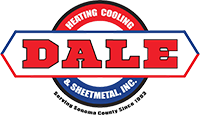Staying comfortable without depending entirely on your air conditioning gives you a chance to find more natural ways to keep cool while keeping energy costs down.
A Naturally Cool Plan
In order to keep your entire home cool, you need a plan that covers each level of your home. By making easy tweaks on each floor, you can enjoy cool comfort throughout your home this spring and summer.
As a bonus, you’ll save energy, wear and tear on your AC unit, and money on those monthly bills.
Starting at the Top – The Attic
As the hot sun beats down on your roof, it’s no wonder the attic becomes such a hot, humid place. No matter how hot it gets, the temperature in your attic should never get hotter than 10 to 20 degrees over the outside temperature.
Consider these options to keep temperatures down:
Attic Fan
An attic fan is your best defense for air circulation and ventilation.
There are several different attic fans to choose from:
- Roof-mounted fan
Installed on the exterior roof.
- Gable-mounted fan
Installed on existing vents.
- Smart attic fan
Automatically senses temperature changes and adjusts the fan speed accordingly to maintain cool temperatures.
Insulation
Insulate the attic completely to minimize the amount of heat entering the space and act as a barrier to keep it from escaping to other areas of your home.
Primary Living Spaces – Main and Upper Levels
There are a lot of ways to keep the main and upper levels of your home cool.
Ceiling Fans
Install ceiling fans in popular living spaces like bedrooms, the kitchen and living/family rooms.
In hotter months, switch your fan blades to spin in a counterclockwise direction and run on the high setting. By doing so, the fan pushes air down, creating a cool breeze.
Note that a ceiling fan cools down people in a room, not the room itself. By continuously moving air and distributing humidity more evenly, ceiling fans keep everyone in the room noticeably cooler.
Ceiling fans with fewer blades are more efficient, and a steeper blade pitch of around 15 degrees circulates air better than fans with flat blades.
Keep your ceiling fans clean not only to reduce dust, but to keep the motor in good working condition and the blades running smoothly. After cleaning, a light coat of metal or furniture polish also helps eliminate ceiling fan “drag,” also keeping the motor in top shape.
Tighten up any loose screws that cause the fan to wobble, which is also hard on the motor. A couple drops of oil lubricates working parts for smoother operation and gets rid of annoying squeaks and other noise.
Close Blinds and/or Drapes
During sweltering days, close the blinds or drapes to keep the sun from heating up your rooms and keep cool air inside.
Cooking Alternatives
Instead of firing up the stove or oven, opt instead for cooking in a crockpot or grilling out. If you need to use the oven, try to get your cooking done as early in the day as possible before temperatures rise.
Exhaust Fans
Run bathroom exhaust fans, which not only dry up humidity after a shower, but help to suck hot air out of your home and vent it outside.
Awnings
Install awnings to keep the hot sun rays from shining directly through your main floor level windows.
No-heat Light Bulbs
Switch out any light bulbs you’re using that generate heat. Instead, switch to LED or lower wattage bulbs which throw off little to no heat.
Basement Relief
The good news is that basements are usually always cooler than the rest of your home almost all year round.
There’s not much you need to do down there other than to run a dehumidifier to maintain air quality and prevent mold, which thrives in damp, humid conditions.
The Nearly Forgotten Crawlspace
In homes with a crawlspace, homeowners may not even consider that this is another major source of losing cool air from inside.
During bouts of hot weather, hot air enters and stays present in the crawlspace. Eventually, it creeps up and into the house through pipes, spaces, cracks or leaks, a true nemesis to your cooling efforts.
Insulating a crawlspace is critical to keeping cool air inside your home. Areas in a crawlspace that should be insulated include the access door and perimeter of all walls. It’s also important to repair any leaks to pipes or ducts.
Conclusion
As you can see, there are a lot of ways to keep your home cool naturally so you can enjoy energy cost savings and accelerate the efforts of your air conditioner.
Before things really heat up here in Sonoma County, call Dale HCS in Santa Rosa to schedule an inspection, cleaning and tune-up of your air conditioning and HVAC system.

